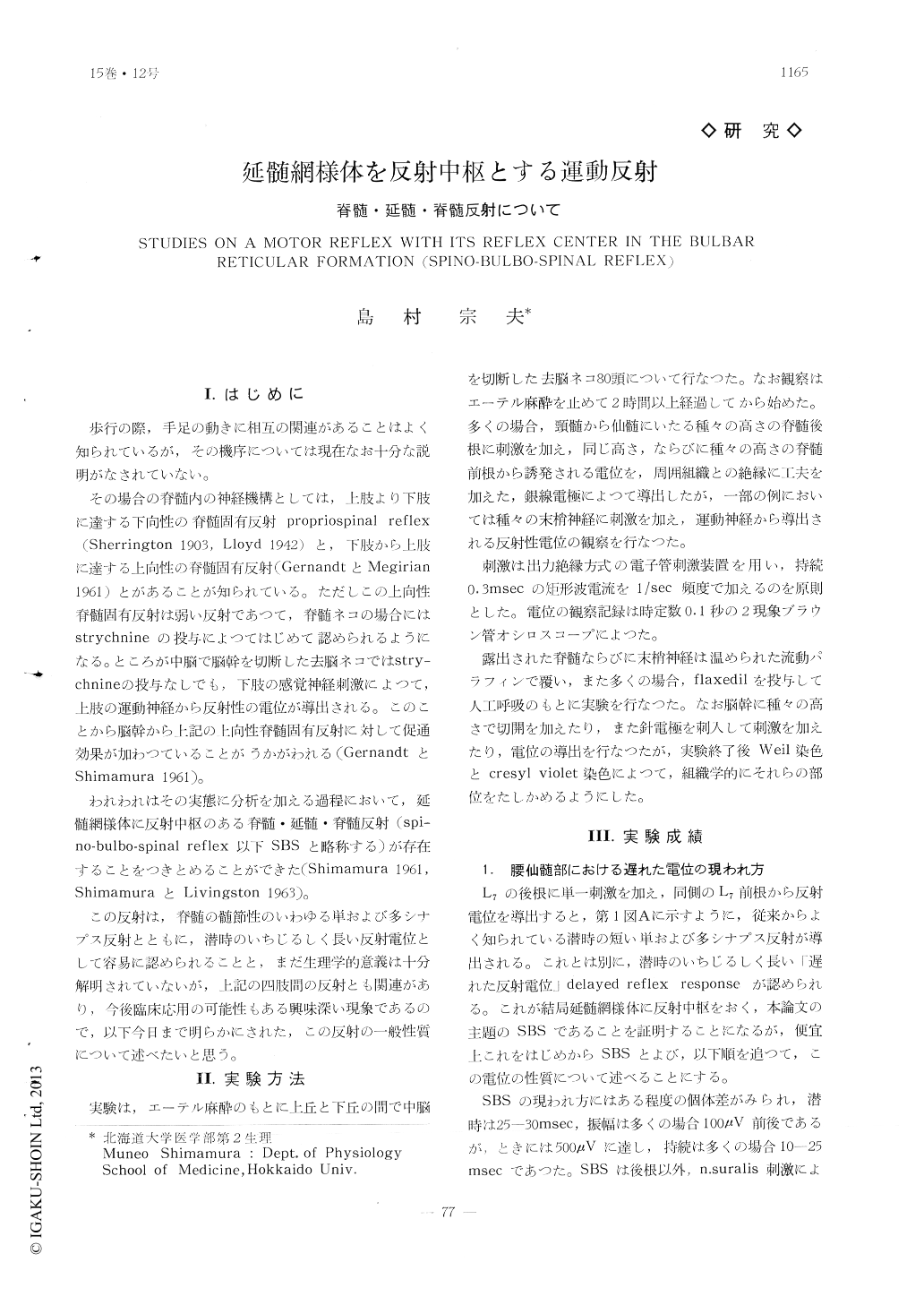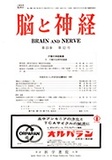Japanese
English
- 有料閲覧
- Abstract 文献概要
- 1ページ目 Look Inside
I.はじめに
歩行の際,手足の動きに相互の関連があることはよく知られているが,その機序については現在なお十分な説明がなされていない。
その場合の脊髄内の神経機構としては,上肢より下肢に達する下向性の脊髄固有反射propriospinal reflex (Sherrington 1903, Lloyd 1942)と,下肢から上肢に達する上向性の脊髄固有反射(GernandtとMegirian 1961)とがあることが知られている。ただしこの上向性脊髄固有反射は弱い反射であつて,脊髄ネコの場合にはstrychnineの投与によつてはじめて認められるようになる。ところが中脳で脳幹を切断した去脳ネコではstry—chnineの投与なしでも,下肢の感覚神経刺激によつて,上肢の運動神経から反射性の電位が導出される。このことから脳幹から上記の上向性脊髄固有反射に対して促通効果が加わつていることがうかがわれる(GernandtとShimamura 1961)。
1) Experiments were carried out on 80 dece-rebrated cats for the purpose of analyzing longitudinal sensorimotor reflex systems and pathways. Two different longitudinal reflex systems are encountered: one, propriospinal (PS), the other spino-bulbo-spinal (SBS)
2) Stimulation of the spinal dorsal root (or cutaneous nerve), yields two reflex responses from the spinal ventral root (or flexor motor nerve), segmental mono-, polysynaptic and de-layed reflexes (SBS, 25-30 msec. latency), which are differentially susceptible to asphy-xia and anesthetics.
3) PS and SBS reflexes have apparently analogous counterparts which can be recorded from all segments of the spinal cord above and below the level stimulated. Latencies for the PS become steadily longer in both directions along the spinal cord away from the site of stimulation. Latencies for the SBS response become steadily shorter as one records from segments closser to the medulla oblongata, no matter what is the level of stimulation. This observation seems to require that motor expression of the SBS reflex system is in reaction to a volley of impulses descending the spinal cord.
4) Several lines of evidence (response laten-cies, partical brain-stem transection, transi-ent, cooling, and local distruction) indicate that the relay for the SBS system is located in the caudal part of the medulla oblongata, near the midline, extending about 5-6mm forward from a few millimeters above the level of the obex.
5) The PS system is sufficient within the spinal cord. Its pathways are relatively slo-wly conducting (20m/sec) and show evidence of abundant crossing of the spinal cord. In contrast, the SBS system involves a relay in the bulbar reticular formation and re-entry into the spinal cord from above downward before initiating its reflex effects. The path-way is rapidly conducting (60m/sec) during ascent, and relatively more slowly conducting (30m/sec) during descent. There is no eviden-ce of crossing of this pathways during either its ascending or its descending trajectories along the spinal cord.

Copyright © 1963, Igaku-Shoin Ltd. All rights reserved.


